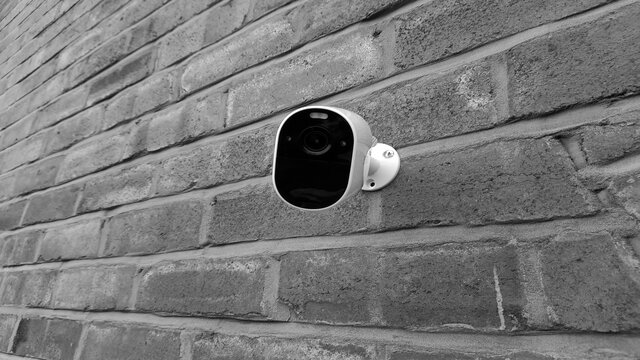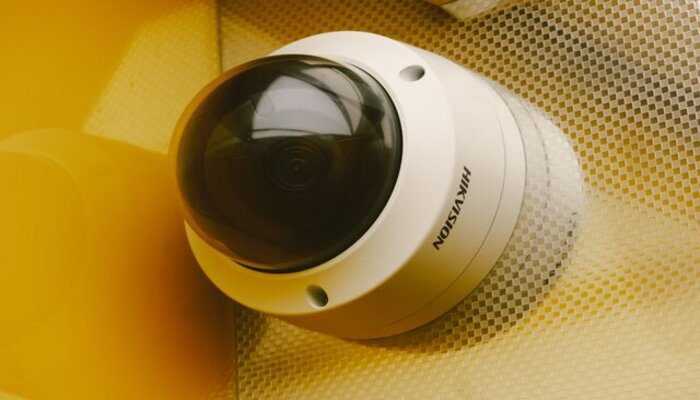No WiFi Security Camera
No WiFi Security Camera, In the ever-evolving landscape of home security, the advent of no WiFi security cameras is a game-changer for those seeking reliable surveillance solutions, regardless of their internet connectivity.
It also known as cellular or wireless security cameras, have gained popularity for their ability to operate independently without a local network connection.
These cutting-edge devices utilize cellular networks, ensuring that your property remains under vigilant watch, even in remote locations or areas with unreliable WiFi access.
No WiFi security cameras offer the flexibility and freedom to monitor your home, office, or outdoor spaces, providing peace of mind in various scenarios, from monitoring vacation homes to overseeing construction sites.
This introductory paragraph sets the stage for exploring the world of no WiFi security cameras, highlighting their essential attributes and the convenience they bring to the realm of home security.
Whether you’re in a WiFi dead zone or require surveillance in off-grid locations, these cameras promise an uninterrupted safeguarding experience.
What Are No WiFi Security Cameras?
No WiFi surveillance cameras, otherwise called “remote surveillance cameras,” work freely from a WiFi organization. Not at all like conventional WiFi-empowered cameras.
Do they depend on a steady web association with capability? All things considered, they utilize different strategies, like cell organizations, nearby capacity, or restrictive remote conventions, to communicate and store film.
How Do No WiFi Security Cameras Work?
No WiFi security cameras employ various technologies to maintain their functionality. Some common methods include:
Cellular Networks: Some cameras use SIM cards to connect to cellular networks, ensuring a constant connection even in remote areas.
Local Storage: These cameras store footage on internal memory cards or external hard drives, eliminating the need for cloud storage.
Proprietary Wireless Protocols: Certain models use dedicated wireless protocols, allowing cameras to communicate with a local hub or base station.
Power over Ethernet (PoE): PoE cameras draw power and transmit data through a single Ethernet cable, reducing the need for WiFi connectivity.

Remote monitoring
Remote monitoring of No WiFi Security Cameras provides a valuable sense of security, allowing users to maintain a watchful eye on their properties effortlessly.
These cameras, purpose-built to operate without Wi-Fi, empower individuals to access real-time video feeds, receive immediate alerts, and review recorded footage from the convenience of their mobile devices or computers.
This remote access capability is a game-changer for individuals seeking robust surveillance solutions in locations with unreliable or no Wi-Fi access.
Whether you’re monitoring a rural property, construction site, or any area without consistent internet connectivity,it offer dependable, independent surveillance.
With remote monitoring, users can enjoy peace of mind, knowing they can access critical information and footage anytime, anywhere. It’s a versatile security solution tailored to your specific needs.
Pros and Cons of No WiFi Security Cameras
Pros:
Reliability in Remote Areas: No WiFi security cameras work in locations with unreliable or no Wi-Fi, providing surveillance where it’s needed most.
Independence from Internet: These cameras operate independently, reducing the risk of signal disruptions and offering continuous monitoring.
Reduced Monthly Costs: No Wi-Fi means no data charges or monthly subscription fees for internet connectivity, saving you money.
Versatile Placement: You can install these cameras in various locations without worrying about Wi-Fi signal strength or range.
Data Privacy: With no internet connection, your footage is less susceptible to hacking or unauthorized access.
Quick Setup: Installation is often simpler and quicker since there’s no need to connect to a Wi-Fi network.
Ideal for Temporary Surveillance: They are perfect for short-term surveillance needs, like construction sites or outdoor events.
Cons:
Limited Remote Access: Remote monitoring can be challenging without Wi-Fi, restricting your ability to view footage away from the camera location.
Local Storage Constraints: No Wi-Fi cameras rely on local storage, which may have limitations in terms of capacity and convenience.
Data Retrieval Challenges: Accessing recorded footage can be more cumbersome compared to cloud-based systems.
Mobile Data Usage: If you use mobile data for remote access, it can lead to increased data consumption, potentially incurring additional costs.
No Live Streaming: Some no Wi-Fi cameras may not support live streaming, which can be a drawback for real-time monitoring.
Compatibility Concerns: Ensuring compatibility with your mobile device and operating systems may require additional consideration.
Dependence on Power: These cameras often rely on continuous power sources, such as batteries or electricity, which must be maintained.

FAQs
Where are No WiFi Security Cameras most commonly used?
Describe the typical scenarios and locations where these cameras are advantageous.
Do No WiFi Security Cameras provide remote access for monitoring?
Explain the possibilities of remote monitoring and the methods for accessing footage.
Is local storage the only option for recorded footage?
Explain the storage options available, including local storage and any cloud alternatives.
What security measures are in place to protect data on No WiFi Security Cameras?
Discuss the security and privacy features of these cameras.
Do No WiFi Security Cameras require regular maintenance, and what are the challenges?
Address maintenance considerations, such as power source requirements and data retrieval.
How do No WiFi Security Cameras compare in cost to traditional Wi-Fi cameras?
Provide a cost analysis, including initial setup costs and potential long-term savings.
Can No WiFi Security Cameras be integrated with other smart home devices?
Explain the compatibility of these cameras with other devices and systems.
What are some recommended use cases for No WiFi Security Cameras?
Offer suggestions for specific situations and settings where these cameras excel.
Conclusion
- No WiFi security cameras provide a compelling solution for those seeking reliable, cost-effective, and privacy-focused home security.
- Their ability to function independently of WiFi networks is particularly valuable in remote areas or locations with weak signal coverage.
- However, it’s crucial to consider the drawbacks, such as limited remote monitoring and integration challenges, before making a decision.
- Assess your specific security needs and the technological requirements of your property to determine whether no WiFi security cameras are the right choice for you.
- No WiFi security cameras offer a reliable, cost-effective, and privacy-focused security solution for homes.
- Their independence from WiFi networks is beneficial for areas with poor signal coverage or remote locations.

As a dedicated blogger, With a passion for writing, I aim to create engaging content that informs, entertains, and inspires. Join me on this journey as we explore a world of ideas, experiences, and knowledge through the written word.



